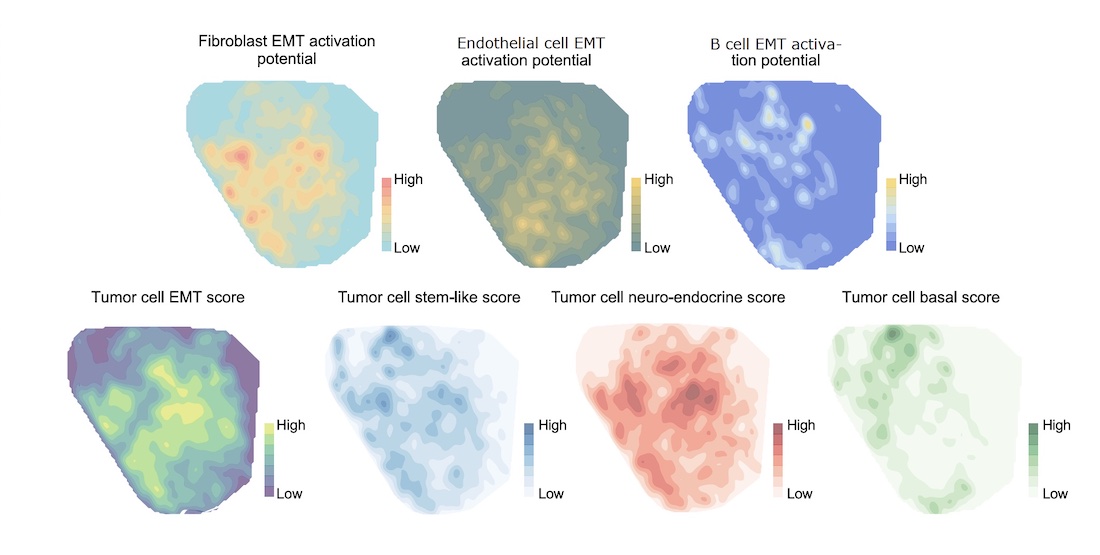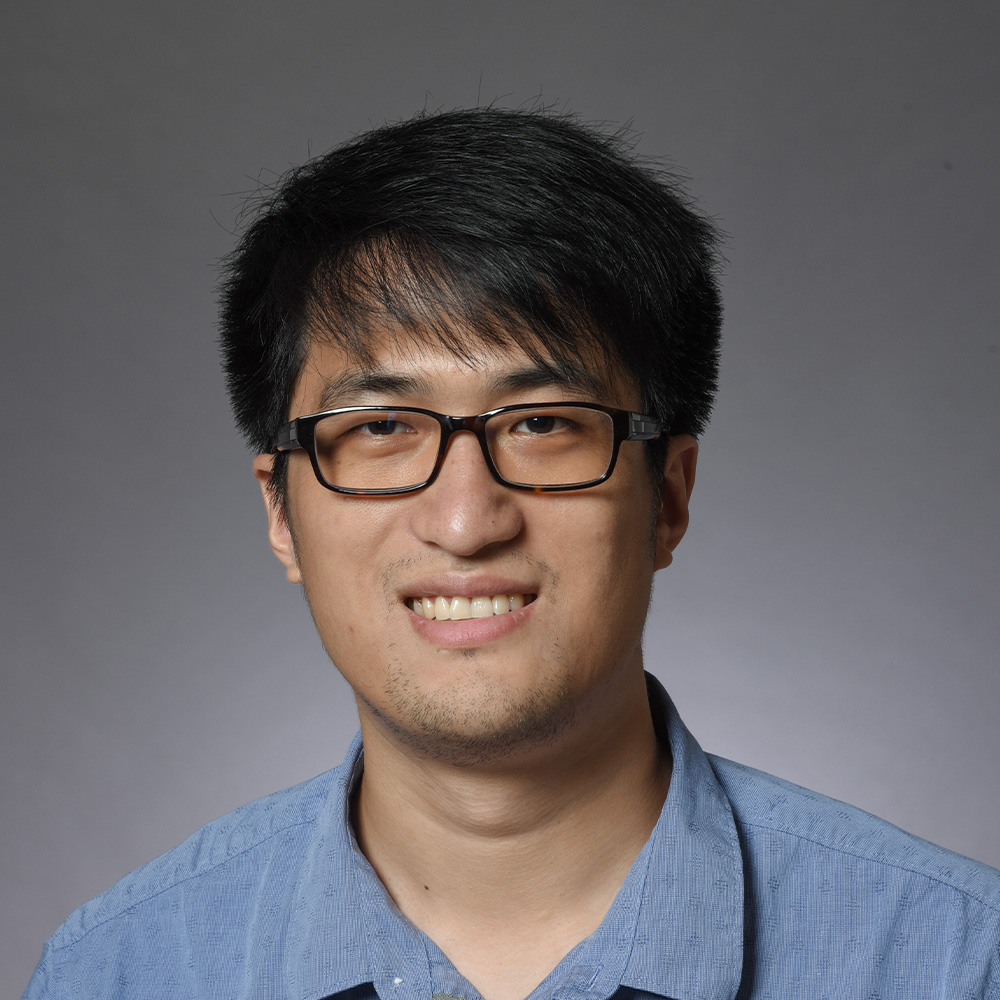Computer model boosts detection of cell-to-cell communication
Spacia, developed by UTSW researchers, could speed numerous biomedical advances

DALLAS – Sept. 03, 2024 – A computer model developed by UT Southwestern Medical Center researchers significantly enhances the ability of scientists to detect communication between cells, according to a new study published in Nature Methods. The model, called Spacia, could help advance understanding of a wide range of diseases including cancers, autoimmune disorders, infectious diseases, and developmental abnormalities.

“Cell-to-cell communication (CCC) is incredibly important for all life forms. With Spacia, we are able to decipher it better than ever before,” said Tao Wang, Ph.D., Associate Professor in the Peter O’Donnell Jr. School of Public Health and in the Center for the Genetics of Host Defense at UT Southwestern. He is a member of the Population Science & Cancer Control Research Program in the Simmons Cancer Center. Dr. Wang co-led the study with Yang Xie, Ph.D., Professor in the O’Donnell School of Public Health and the Lyda Hill Department of Bioinformatics and Associate Dean for Data Sciences at UT Southwestern Medical School. Drs. Wang and Xie are investigators in the Quantitative Biomedical Research Center in the O’Donnell School of Public Health.
CCC is necessary for a vast range of biological processes, including development, health maintenance, and disease progression. In recent years, researchers have developed experimental techniques that provide information on the activity of genes in individual cells (single cell sequencing), and even the location of cells (spatially resolved transcriptomics, SRTs), which yield critical information for inferring CCCs. However, programs that analyze the wealth of data generated by these techniques to extract accurate CCC relationships have several drawbacks. For example, some programs take an average reading of gene activity among groups of spatially neighboring cells, losing single-cell resolution, and others are only able to detect communications between cells in known regulatory pathways.

To overcome these issues, Drs. Wang and Xie and their colleagues used a mathematical technique called multi-instance learning (MIL) to develop Spacia for inferring CCCs from SRT data. MIL, a subset of machine learning, is well known in the computer science field; however, it has rarely been explored for biomedical use, Dr. Xie explained.
The researchers tested Spacia in a variety of contexts using data generated by SRTs, gathering significant insights. For example, using an SRT dataset from prostate cancer tissue, Spacia found that several cell types in the tumor microenvironment participate in a phenomenon called epithelial-mesenchymal transition, an important contributor to metastasis. Deploying Spacia on a pan-cancer SRT dataset that included breast, colon, skin, and lung cancers, among other types, the researchers found that B cells, a type of immune cell, react to signaling from tumor cells targeted by immunotherapy drugs known as checkpoint inhibitors. They also discovered a different CCC signature that accurately predicted cancer patient survival rates and their response to checkpoint inhibitors.
“Our study highlights the power of integrating spatial and transcriptomic data to uncover hidden cellular interactions that drive disease progression and treatment resistance,” said Dr. Xie. “Spacia represents a significant advancement in our ability to translate molecular insights into clinical applications, ultimately improving patient care.”
Dr. Xie noted that Spacia is presently most useful for biological research. But eventually, as the current high cost of SRT declines, doctors may use this tool to identify drug targets specific to individual patients’ diseases, dramatically improving personalized medicine.
Other UTSW researchers who contributed to this study include co-first authors and graduate student researchers James Zhu, B.S., and Woo Yong Chang, M.S., and co-first author Yunguan Wang, Ph.D., former staff scientist and now Assistant Professor in the Cincinnati Children's Hospital, Department of Pediatrics; Nisha Unni, M.D., Associate Professor of Internal Medicine; Raquibul Hannan, M.D., Ph.D., Professor of Radiation Oncology, Immunology, and Urology and Chief of the Genitourinary Radiation Oncology Service; Siyuan Zhang, M.D., Ph.D., Associate Professor of Pathology; Guanghua Xiao, Ph.D., Professor in the O’Donnell School of Public Health, of Biomedical Engineering, and in the Lyda Hill Department of Bioinformatics; Ariella B. Hanker, Ph.D., Assistant Professor in the Harold C. Simmons Comprehensive Cancer Center and of Internal Medicine; Douglas Strand, Ph.D., Associate Professor of Urology; Carlos L. Arteaga, M.D., Director of the Simmons Cancer Center and Associate Dean of Oncology Programs at UT Southwestern; Neil Desai, M.D., Associate Professor of Radiation Oncology and Director of Clinical Research in the Department of Radiation Oncology; Alicia Malewska, M.S., Research Associate; Fabiana Napolitano, M.D., Visiting Senior Researcher; Min Zhao, B.S., Senior Research Scientist; Rongqing Yuan, B.S., Graduate Student Researcher; Fangjiang Wu, B.S., Scientific Programmer; and Lei Guo, Ph.D., Computational Biologist.
Dr. Arteaga holds the Annette Simmons Distinguished University Chair in Breast Cancer Research. Dr. Xiao holds the Mary Dees McDermott Hicks Chair in Medical Science. Dr. Xie holds the Raymond D. and Patsy R. Nasher Distinguished Chair in Cancer Research, in Honor of Eugene P. Frenkel, M.D.
Drs. Desai, Hannan, Strand, Unni, Wang, Xiao, Xie, and Zhang are also members of the Simmons Cancer Center.
This study was supported by grants from the National Institutes of Health (R01CA258584/TW, RC2DK129994/DS, R01DK115477/DS, R01DK135535/DS, R01CA222405/SZ, R01CA255064/SZ), Cancer Prevention and Research Institute of Texas (RP230363/TW, RP190208/TW, RR170061/CA, RR220024/SZ), the Dedman Family Scholars in Clinical Care, and the National Cancer Institute Cancer Center Support Grant (P30CA142543).
About UT Southwestern Medical Center
UT Southwestern, one of the nation’s premier academic medical centers, integrates pioneering biomedical research with exceptional clinical care and education. The institution’s faculty members have received six Nobel Prizes and include 25 members of the National Academy of Sciences, 22 members of the National Academy of Medicine, and 14 Howard Hughes Medical Institute Investigators. The full-time faculty of more than 3,200 is responsible for groundbreaking medical advances and is committed to translating science-driven research quickly to new clinical treatments. UT Southwestern physicians provide care in more than 80 specialties to more than 120,000 hospitalized patients, more than 360,000 emergency room cases, and oversee nearly 5 million outpatient visits a year.
